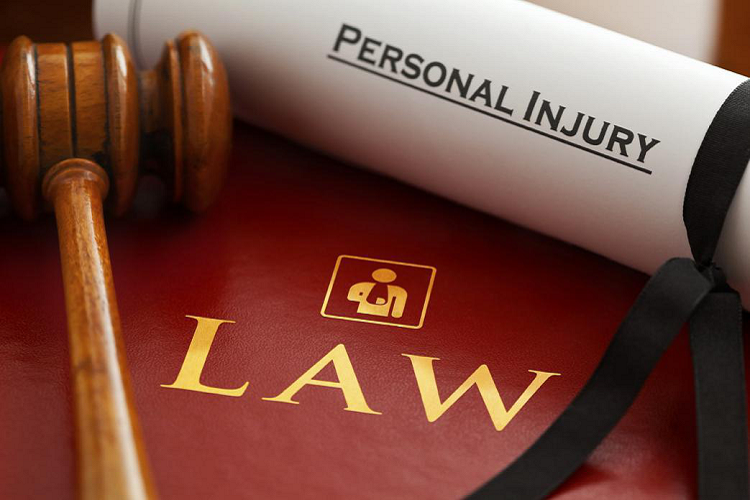Winning a personal injury claim requires the submission of valid evidence in court. It is necessary to prove the negligence of the defendant, and detail the injury as well as the extent of damages that the victim has sustained.
The first few days after the accident are crucial for collecting as much information/proof as possible from the scene of the crash. Pursuing a personal injury entails knowing about what kind of evidence is needed and how it should be collated. The victim may, therefore, seek professional assistance from experienced personal injury lawyers.
Here are a few types of evidence that should be looked for after a personal injury has occurred.
1) Evidence from the Scene of Accident
In an accident, fault can be proven with the help of physical material gathered from the site of crash. Physical material provides an understanding of the severity of the accident. For example, the extent of damage to a car can help demonstrate the intensity of the impact, and bloodied clothing can reflect the level of the physical injuries sustained. These type of physical evidence help determine the type and amount of damage that has resulted from the accident.
Further, an accident may not necessarily have happened due to the negligence of another person. It can also be caused by bad roads or rough weather conditions. In these cases, the role of evidence like skid marks, broken glass or bad roads is understood only after reaching the scene of the accident. It is, therefore, best to look for these clues at the spot of the accident.
2) Documentation of Injury
The evidence required to proceed with a personal injury case should be documented appropriately. This includes medical information, insurance details, treatment and other bills, and related statements. These documents will give a fair understanding of the settlement that should be provided for the damage caused. If any equipment has been damaged, appropriate bills and paperwork detailing the repair along with photographs of the damaged equipment will provide an insight into the same and strengthen the case.
3) Witnesses for Testimony
Witnesses from the scene of accident play an important role in the personal injury case. They may be third-party spectators or family members who have witnessed the accident. They will be able to furnish accurate details about what actually happened and caused the accident. Testimonials can also be obtained on paper or through recordings.
4) Photos and Videos
Photographic and video evidence is critical and can be highly beneficial to the defendant. This type of evidence is considered reliable and helps lawyers to recreate the crash situation in front of the jury. Videos and photographs from street cameras can provide accurate information about any malicious activity that resulted in personal injury from an accident.
5) Evidence from Emergency Services
Though not all accidents will need the care and attention of emergency services, there may be cases wherein injuries can be serious. Individuals associated with emergency services are unbiased and factual. They witness the entire series of incidents post the crash, which is why their accounts are necessary when trying to prove negligence.
Including evidence from members of emergency services can be an advantage as they are experienced in providing information. They will not fail to furnish important details, cannot be bullied by the at-fault party, or be intimidated by legal representatives.
6) Medical Examinations
In several personal injury cases, the injuries are not evident as soon as the accidents occur. Victims may overlook the need to check with a doctor for internal injuries. In accidents that include collisions and head injuries, there are chances of suffering concussions. This injury creates discomfort days after the accident occurs. In these cases, medical reports from an experienced doctor will help in a huge way to prove physical and mental injuries associated with the accident.
7) Lost Wages
If the victim has not been able to return to work due to the personal injury, he/she may be entitled to receiving the wages for the number of missed working days. If the victim has been advised rest, he/she must obtain a written note from the doctor about this.
The victim must also ask his/her employer for a letter mentioning the number of days missed at work due to the injury. If vacation or other leaves have been used, the employer must necessarily include this in the statement.
This information will add value when presenting a personal injury case in the court of law.
What Should Be Done after Collecting Evidence?
All evidence that has been collected should be preserved safely. Altered evidence is not considered viable during trial.
A few things to take care of once evidence has been collected include:
- Categorize and organize the evidence. This will make it easier to handle and reproduce them during trial.
- Ensure to keep the evidence confidential and private.
- Make sure not to share details about the claim or personal injury on social media. Sharing intricate details may have a negative impact on the proceedings of the case.
How Does a Personal Injury Lawyer Help?
If the personal injury case is straightforward, it may proceed smoothly and fair compensation for the damage caused may be obtained. However, seeking intervention from an experienced personal injury lawyer may be most helpful.
An experienced local lawyer will present the evidence most favorably and fight to help you obtain fair compensation. If a car accident has occurred in Mount Vernon, for example, attorneys from the Mount Vernon car accident law firm can help in the appropriate representation of the case based on the laws of the state.
Wrap Up
Dealing with personal injury is physically and emotionally demanding. Though it is tough to make the right decisions, it is important to compile as much as evidence as possible to prove the negligence of the defendant. The above-mentioned tips will help you understand the different kinds of evidence that can be helpful and how they can be collected.



